James Ellsworth De Kay
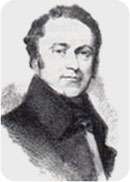
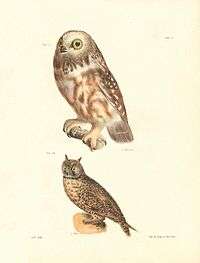

James Ellsworth De Kay (alternatively spelled DeKay or Dekay) (October 12, 1792 – November 21, 1851) was an American zoologist.
Biography
James De Kay was born in Lisbon, Portugal in 1792. When he was two years old, his family moved to New York; both his parents died while he was still quite young. He attended Yale from 1807 to 1812, but was expelled before completing his degree when he threatened a college tutor with a club. Later, he studied medicine at the University of Edinburgh, receiving his MD in 1819.
After his return to the United States, he married Janet Eckford, a daughter of Henry Eckford, a ship builder. He then traveled with his father-in-law to Turkey as a ship's physician, and published a book, Sketches of Turkey in 1831 and 1832, about these travels. Although well received as an entertaining travelogue, his book has been criticized as being very anti-Hellenic[1][2] as well as sometimes naive about Turkish customs.[3] He was entrusted by Eckford with negotiations with Brazil and other South American powers, relative to the ships of war that had been ordered by the latter.[4] In 1830, he was elected into the National Academy of Design as an honorary academician.
In 1833 his brother, George Coleman De Kay, married the only daughter of the poet Joseph Rodman Drake, and De Kay became familiar with Drake, Fitz-Greene Halleck, William Cullen Bryant, and other men of literature and science.
De Kay returned to Oyster Bay, New York, giving up medicine for the study of natural history. On the outbreak of cholera in New York City, De Kay hastened to give his services to the afflicted, although the practice of his profession was repugnant to him. He became involved with the Geological Survey of New York,[5] initiated in 1835. As a result, from 1842 to 1844 he published the multi-volume Zoology of New York, or The New-York Fauna covering: mammals, birds, reptiles and amphibians and fish.[6] This work was illustrated by the British born American painter John William Hill.[7] Hill and De Kay spent much time in the field. By the end of April 1839, they had provided full descriptions and drawings for 700 of the nearly 2,300 animals they estimated to exist in New York, and begun rough descriptions of many more. In order to best represent the animals, Hill and De Kay early on decided to use a camera lucida for the rough drafts of the drawings.[8] Hill's drawings of birds for De Kay's Zoology of New York were significant in that they represented the first time hand-colored lithographs were used to illustrate a state bird book.
De Kay collected the first specimen of a species of small brown snake on Long Island, which was named for him as Storeria dekayi (Holbrook, 1836). De Kay died at Oyster Bay in 1851.[9]
Gallery
Images from Zoology of New York, Part II, Birds
-
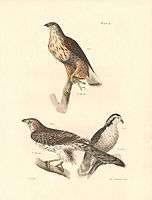
"Plate II. Fig. 3. The Rough-legged Buzzard (Buteo sancti-joannis). 4, 5. The American Goshawk (Astur atricapillus)."
-
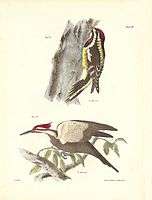
Plate XVIII
-

Plate XXXVII, hermit thrush above, and "Northern Butcher-bird" (likely not a true butcherbird, but a shrike below
-

Plate LXI
-
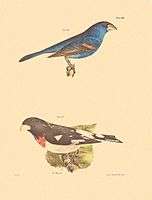
Plate LXIV
-
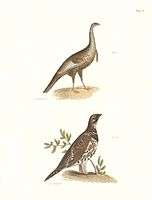
Plate LXXVI
-
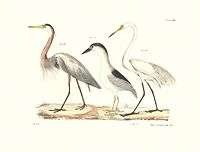
Plate LXXXI
-
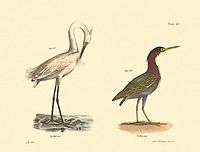
Plate LXXXII
-
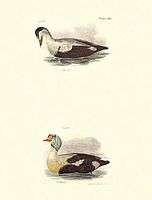
Plate CXIII
-

Plate CXXX
-
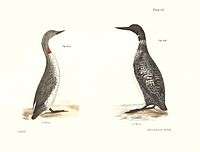
"Plate CXXXVII Fig. 299. The Great Loon (Colymbus glacialis).
300. The Red-throated Loon (Colymbus septentrionalis)." -
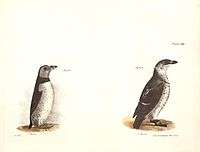
Plate CXXXIV, Atlantic puffin left, and little auk right
-
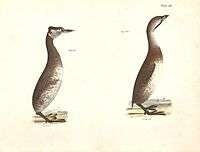
Plate CXLI, red-necked grebe left, and dipper right
Images from Zoology of New York, Part V, Mollusca and Part VI, Crustacea
-

Mollusca Plate 13
-
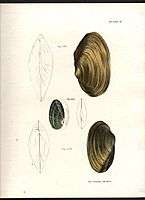
Mollusca Plate 18
-

Mollusca Plate 20
-

Mollusca Plate 53
-

Crustacea Plate 13
References
Notes
Bibliography
- Aldrich, Michele L., “New York State Natural History Survey 1836-1842, A Chapter in the History of American Science”. Paleontological Research Institution, 2000. New York.
- De Kay, James Ellsworth (“Anonymous”). “Sketches of Turkey in 1831 and 1832, by An American”. J. & J. Harper, 1833. New York.
- De Kay, James Ellsworth and Hill, J. W. (illustrator) Zoology of New York, or the New-York Fauna, Part II, Birds. J. F. Schreiber, 1844.
- Gratacap, L.P. “Formative Museum Period,” Science, A Weekly Journal Devoted to the Advancement of Science, Publishing the Official Notes and Proceedings of the American Association for the Advancement of Science. New Series. Volume XIV. No 344. (August 2, 1901). p. 168-176.
- Fairfield, Sumner Lincoln (editor) and A.C.D (author otherwise unidentified). “The Greeks and the Turks,” The North American Magazine.” New Series. Vol. III, No. XIV. (December 1833). p. 73-80.
- Wilson, James Grant and Fiske, John. “Appleton's Cyclopædia of American Biography, Vol. 2”. D. Appleton and Company, 1887. New York.
- Ze'evi, Dror. “Producing Desire: Changing Sexual Discourse in the Ottoman Middle East, 1500-1900”. University of California Press, 2006.
External links
- Bird Images: De Kay, James E. & Hill, J.W. High resolution, scanned images of all 141 plates from Zoology, Part 2 (Birds) at Old Book Art. Public Domain.
-
 "De Kay, James Ellsworth". Appletons' Cyclopædia of American Biography. 1900.
"De Kay, James Ellsworth". Appletons' Cyclopædia of American Biography. 1900. - "Early Academic Period". Geologic Overview of the Trenton Group. Retrieved March 23, 2005.
- De Kay, James E. Zoology of New York, or the New-York Fauna; comprising detailed descriptions of all the animals... This work was published from 1842-1844 as part of the series Natural History of New-York, which was commissioned in 1836 by the New York State legislature to provide for a geological and natural history survey of New York State. It addressed both recent and fossil mammals, birds, reptiles, amphibians, fish, mollusks and crustaceans. The New York State Library has digitized the entire five-volume set, including hand-colored plates from part 1 (Mammalia), part 2 (Birds) and part 5 (Mollusca and Crustacea).